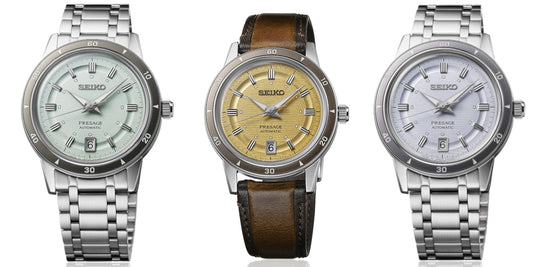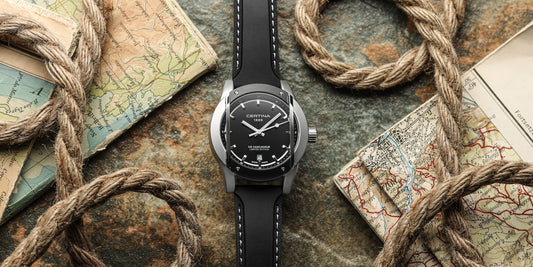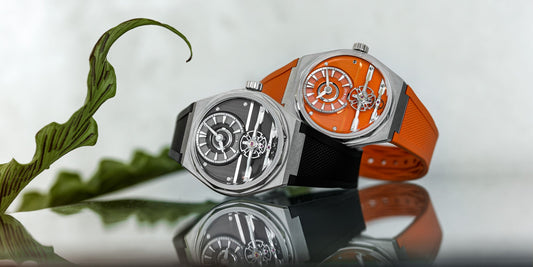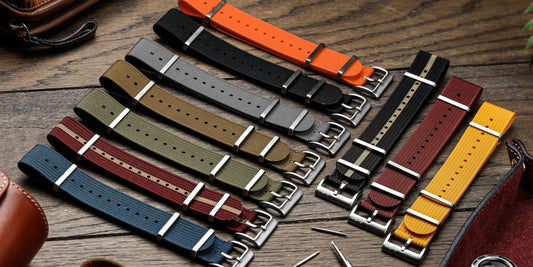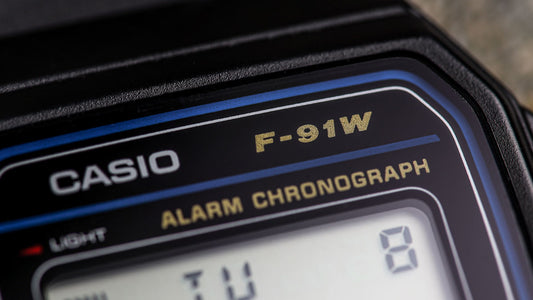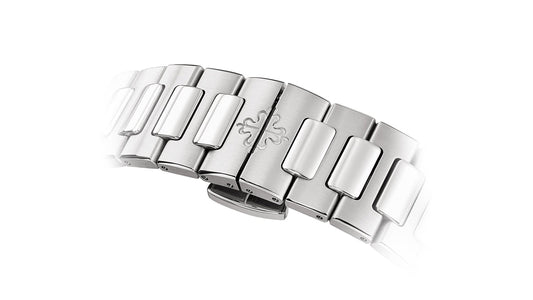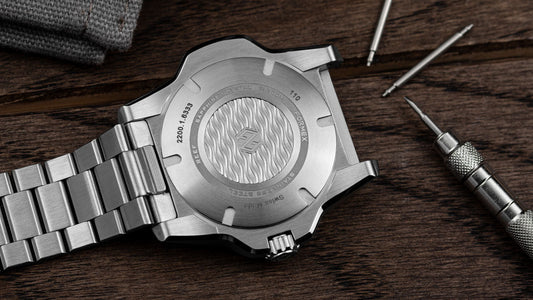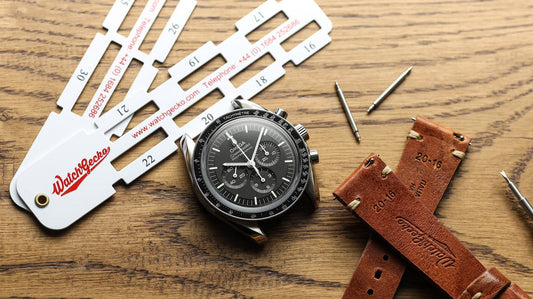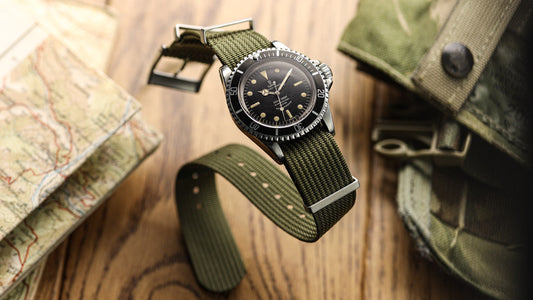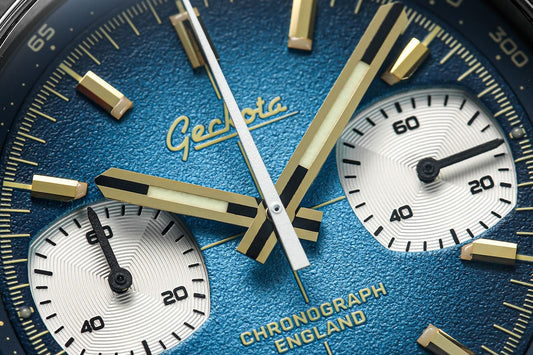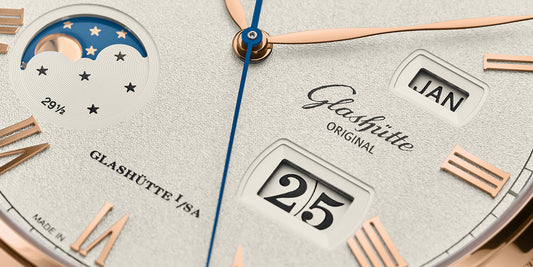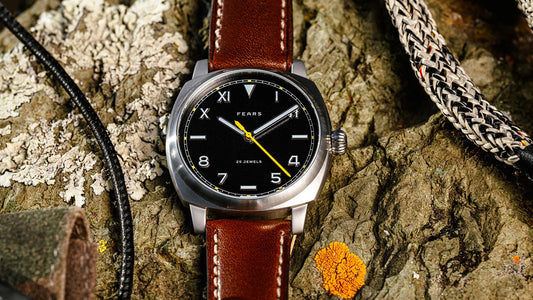A long term review of the Junghans Meister Chronoscope Chronograph - Welcome to the pleasure dome...
Think of successful German mid-tier watch brands and you’ll most likely think of Sinn for their tool watches, or NOMOS Glashütte for their ‘affordable’ in-house movements. But is it time you took another look at Black Forest-based Junghans? Here we shine a light on a watch from one of their core ranges, the Meister collection.
Founded by Erhard Junghans in 1861, the company has enjoyed continuous trading despite a change of ownership in 2000, and again in 2009 when current owners, local businessmen Dr. Hans-Jochem Steim and Hannes Steim, rescued the brand after parent company, Egana Goldpfeil, fell into financial difficulty. Since then it has remained independent.
By 1903 they were the largest watch and clock factory in the world, producing a phenomenal three million timepieces a year. In the 1930s they began to design and manufacture their own movements for wristwatches which were used in the first incarnation of the Meister series, and in 1956 they became the third biggest producer of Chronometer grade movements in the world.If I was to point to two milestone designs that paved the way for Junghans as we know the brand today though, it would be the original Meister range of the 1930s and the Max Bill range of watches first launched after the legendary Bauhaus designer of the same name joined forces with Junghans in the 1960s. Influences of both can be found in the current Meister Chronometer reviewed here.
The Junghans Meister Chronoscope - What It Does

Junghans Meister Chronoscope Chronograph - Image Credit: WatchGecko Online Magazine
Released in 2011, the Meister Chronoscope is modestly sized for a chronograph with useful day/date function and has an understated, classic design aesthetic with a twist of modernity that is the defining elements of Junghans watches. Priced at £1820, my white dialled watch is Ref. Nr. 027/4120.00, but other colourways are available including a blue dial version, dark grey dial and even gold PVD case options.
The stainless steel case measures 40.7mm in diameter and is 13.9mm thick. The overall design resembles a UFO with the mid-case and rear sloping quite dramatically away from the widest point of the watch until it reaches the rear sapphire display-back. It really is a thing of beauty and quite unique. The case is entirely polished and is water-resistant to 30 metres. The form is organic and flowing with no bevels to be found, and few straight edges. The only pronounced lines are where the bottom of the bezel meets the mid-case and a kink where the lugs join the case.

Junghans Meister Chronoscope Chronograph - Image Credit: WatchGecko Online Magazine
The bezel itself is kept deliberately thin as it’s all about the dial and the dome on this one. And what a dome it is! The extreme ultra-domed, convex, plexiglass crystal towers proudly above the top of the case and I can’t remember ever seeing quite such an impressive acrylic dome on a mainstream watch before. The plexiglass is coated for enhanced scratch resistance and whilst I’ve managed not to scratch it yet (touch wood), in all honesty I am probably a little more cautious with it than my other watches.

Junghans Meister Chronoscope Chronograph - Image Credit: WatchGecko Online Magazine
The satin, silver-plated hands are dauphine in shape with a thin section of lume. The minute hand and large chronograph seconds hand curve downwards towards the tip to match the dome of the dial and there is a simple diamond-shaped counterbalance to the seconds hand.
Simple, applied, baton-shaped indices sit at 12, 3, 6, and 9 with thinner printed indices for the minute markers between. The applied indices are also curved to match the dial. There is a well-executed double-stepped day and date window at three o’clock, with the date wheel printed crisply in black on white. Dial text is kept succinct and balanced with the Junghans star and logo printed above the date display, and ‘Chronoscope’ below. ‘Made in Germany’ in a smaller font sits beneath six o’clock marker.

Junghans Meister Chronoscope Chronograph - Image Credit: WatchGecko Online Magazine
The beautiful, elegant and sharply downturned lugs are kept very short, helping the watch to wear comfortably across the span of the wrist. The lugs flow into the mid-case where you’ll find the petite, oval-shaped, chronograph pushers at the two o’clock and four o’clock positions, with the crown sitting between. When viewed from the rear the pushers appear to melt into the side of the case. It’s a lovely little design flourish which really helps minimise the projection of the pushers from the case.
The Meister Chronoscope is fitted with movement calibre J880.1, which is based on the venerable ETA Valjoux 7750 and has 25 jewels. It beats at a frequency of 28800 and has up to 48 hours power reserve. It can be hand-wound and is also hacking, allowing precise time setting. It’s a workhorse movement that can easily be worked on by any competent watchmaker, so servicing shouldn’t be too expensive. Junghans have improved the finishing from the base model by utilising a mix of perlage to base plates, Côtes de Genève stripes to the rotor and cover plate, and blued screws.

Junghans Meister Chronoscope Chronograph - Image Credit: WatchGecko Online Magazine
Junghans don’t quote an accuracy rating, however, my experience has been around plus two seconds per day, which is surprisingly good. Of course, without knowing the standard parameters, it could be that I just got lucky.
Whilst rotor wobble and noise are characteristics of the 7750 movement, it seems more noticeable in the Meister Chronoscope than in many sports watches fitted with the same movement, which by their nature are more substantially built.
Hands-on thoughts
Despite the fact that the proportions of the watch are modest for a chronograph, it certainly wears larger than its 40mm size would suggest, due to the thin bezel and huge dome. It is however incredibly lightweight because of the plexiglass crystal and despite its size it weighs in at an astonishing 73g including the strap. Depending on how you like your watches to feel, this could be either a positive or a negative.The UFO case shape is both a positive and a negative. On the one hand, it helps the watch look a lot less bulky than if it had straight sides, but it also means that the watch perches ‘on top’ of the wrist somewhat instead of nestling in.

Junghans Meister Chronoscope Chronograph - Image Credit: WatchGecko Online Magazine
Crown feel is ok but unexceptional, again something that seems to be across the board on 7750 movements I’ve had experience with. When you wind the crown it feels quite grainy, but it’s solid and there is very little crown play. The square-sided crown is uniformly ribbed, small in diameter and doesn’t project far from the case. It’s signed with the Junghans eight-pointed star and J for Junghans, however the engraving is quite shallow and I’d like to see the branding on the crown increased in size, as to my eye it seems a bit mis-proportioned.
I’ve certainly felt better action from chronograph pushers before too. The click is a little ‘woolly’ and if I used the chronograph function very frequently, I would worry a little about the reliability. Both day and date wheels line up very precisely within their respective windows and click over with the reassuring mechanical ‘clunk’ typical of the 7750 movement.
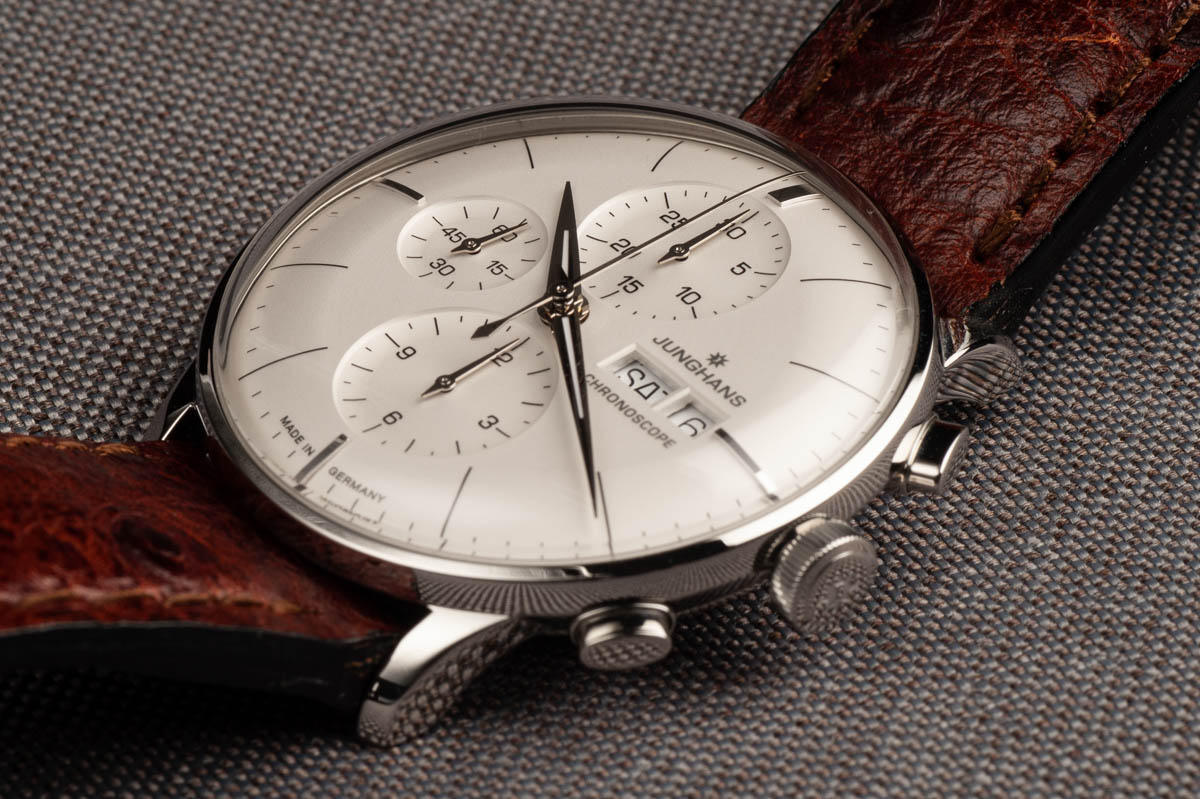
Junghans Meister Chronoscope Chronograph - Image Credit: WatchGecko Online Magazine
The convex dial is divine on this watch. I love it. It begins to slope from the inside edge of the hour markers and continues until it reaches the bezel. Junghans has also totally nailed the dial colour. It’s the perfect balance between white and cream and has a very fine pearlescent-like finish. It’s somehow warm whilst still remaining quite pure.
The three beautifully concaved, dish-like sub-dials are distinctly Junghans, and in the absence of colour contrast, the clever interplay between the convex main dial and concave sub-dials help bring contrast and clarity to the watch’s monotone face. When combined with the stunning, domed plexiglass crystal, the dials play beautifully in the sunlight creating beautiful reflections and refractions as illustrated in the photography (see right). It’s also worth noting that each sub-dial has a concentric circle pattern and although this isn’t noticeable unless you have a loupe, it does illustrate the level of detail found throughout the watch.
I’ve found comfort overall to be very good. The curvaceous case means there are no sharp edges to aggravate the skin and the petite crown and pushers help ensure there is little chance of ‘dented hand’ phenomena or a marked wrist due to crown protrusion.
Things we would change
Sadly, the factory strap is the worst strap on a watch at this price point that I’ve ever owned. Whilst the burgundy colour suits the watch, it fell apart after a few months of occasional wear, which is not acceptable at any price point really, let alone a watch costing nearly £2k. The photographs used in this article show an aftermarket strap, not the original, which has long gone. The original strap uses a simple but elegant stainless steel signed pin buckle rather than a deployant clasp.

Junghans Meister Chronoscope Chronograph - Image Credit: WatchGecko Online Magazine
The lug width is an awkward 21mm, but the plus side is that this is a watch that is crying out for experimenting with different aftermarket straps and I can see a wide variety of leathers working well with it. If you change the strap though, you’ll need to choose a relatively thin one as there is minimal space from the case between the lugs to the spring bar. Junghans also offer a bracelet option, which curiously now doesn’t cost any more than the leather option, so my advice would be to go for this and then choose an aftermarket strap to change up the look.
Final Thoughts
For me, the Meister Chronoscope is all about the case and dial design, aspects which I also see as being Junghans’ forte as a brand. It has an undeniable charm which somehow straddles vintage and modern, and I have to say that I’m now a convert to plexiglass when used on the right watch, despite my reservations about it being more easily scratched. For those less convinced though, Junghans offer a sapphire ‘upgrade’ option.

Junghans Meister Chronoscope Chronograph - Image Credit: WatchGecko Online Magazine
Paradoxically, it’s an understated watch, but one which people do notice, especially when the dials and dome play in the sunlight, creating beautiful reflections and refractions, bringing a real dynamism to the watch. Finishing throughout is done to a very high standard and I’ve not come across any defects. The day-date complications are also genuinely useful. If like me, you want a chronograph that doesn’t wear like a brick and doesn’t look like 90 per cent of chronographs out there, the Meister Chronoscope is a pretty unique and compelling option.
If you’re looking for a ‘one and only’ watch though the Meister Chronoscope might not be for you. Despite the fact it’s a chronograph, it is not in any way meant to be a tool watch and whilst the acrylic dome gives the watch a lovely aesthetic, it does mean that it can feel a bit insubstantial and delicate. If you want some of the Junghans DNA but in a tougher package, the sportier Meister S Chronoscope with steel bracelet and screw-down crown might be a better choice. However, it’s worth noting that its proportions swell considerably to 45mm diameter and a thickness of 15.9mm.
I’d love to see Junghans release a manual wind version of this watch which would suit its personality better and help reduce its overall thickness. The feel of the chronograph pushers could be improved, and the dreadful supplied strap needs to be ditched in favour of a one more suited to its price point. Finally, I’d also like to see more transparency from the brand in terms of regulation of the movement and an increased warranty increased period to better compete with recently revised service schedules from other manufacturers. Despite this, it’s hard not to be won over by this rather unique chronograph.Model: Junghans Meister Chronoscope
Price: £1820
Dimensions: 40mm x 13.9mm
Lug to lug: 46mm
Movement: ETA Valjoux 7750, 48-hour power reserve
Complications: Date, Day, Chronograph
Warranty: Two years
the Junghans Meister Chronoscope is now available via junghans.de for £1,820, click here to find out more.





